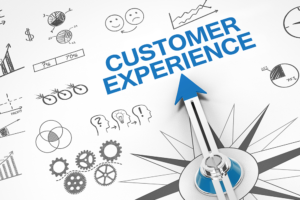In today’s competitive business landscape, understanding and optimizing customer experience (CX) has become a critical factor in business success. This comprehensive guide explores the fundamentals of CX, its implementation, and how organizations can leverage it for sustainable growth.
Understanding Customer Experience
Customer experience encompasses all interactions between a customer and a business throughout their relationship. These touchpoints collectively shape how customers perceive and feel about a brand, ultimately influencing their loyalty and purchasing decisions.
Customer Experience Management
CX management is the systematic approach to overseeing and optimizing all customer interactions. It involves designing intentional experiences, measuring their effectiveness, and making continuous improvements based on customer feedback and behavioral data. This strategic process helps organizations consistently deliver experiences that meet or exceed customer expectations.
The Customer Feedback Loop
The customer feedback loop forms the backbone of effective CX management. This cyclical process involves:
- Gathering customer feedback through various channels
- Analyzing the collected data
- Implementing improvements based on insights
- Monitoring the impact of changes
- Repeating the cycle for continuous improvement
CX vs. Customer Service
While often confused, customer experience and customer service are distinct concepts. Customer service represents a specific touchpoint within the broader customer experience landscape. While customer service focuses on resolving specific issues or answering questions, CX encompasses every interaction a customer has with your brand, including marketing, product use, website navigation, and post-purchase support.
CX vs. Market Research
Customer experience differs from traditional market research in several key ways:
- CX involves continuous feedback collection rather than periodic studies
- It enables two-way communication with customers
- CX focuses on individual experiences and aggregate trends
- It allows for immediate response to customer issues
Evolution of CX Management
Customer experience management continues to evolve with technological advances and changing consumer expectations. Key trends include:
- Integration of AI and machine learning for personalization
- Increased focus on omnichannel experiences
- Real-time feedback analysis and response
- Greater emphasis on emotional connections
- Enhanced data privacy and security measures
Benefits of Strong CX Strategy
Implementing a robust CX strategy offers numerous advantages:
- Increased customer retention and loyalty
- Higher customer lifetime value
- Improved brand reputation
- Enhanced competitive differentiation
- Better operational efficiency
- Data-driven decision making
- Reduced customer acquisition costs
High-Impact Customer Management
Organizations must pay special attention to high-value customers who generate significant revenue. These customers often have unique needs and expectations requiring personalized attention. Effective CX strategies help identify and nurture these relationships through:
- Customized communication
- Priority service
- Exclusive offerings
- Proactive support
- Regular feedback collection
The CX Management Process
The core CX management process consists of four key phases:
- Design and Planning
- Mapping customer journeys
- Identifying key touchpoints
- Setting objectives and KPIs
- Implementation
- Deploying CX initiatives
- Training staff
- Implementing technology solutions
- Measurement
- Collecting feedback
- Analyzing data
- Tracking KPIs
- Optimization
- Making improvements
- Testing new approaches
- Scaling successful initiatives
Essential Elements of CX Strategy
A comprehensive CX strategy should include:
- Journey Mapping
- Detailed documentation of customer touchpoints
- Analysis of pain points and opportunities
- Understanding of customer emotions and needs
- Voice of Customer Programs
- Systematic feedback collection
- Multiple feedback channels
- Regular analysis and reporting
- Performance Metrics
- Customer satisfaction scores
- Net Promoter Score (NPS)
- Customer effort scores
- Retention rates
- Technology Infrastructure
- CX management platforms
- Analytics tools
- Communication systems
Improving Customer Experience
To enhance your CX strategy:
- Establish Clear Objectives
- Define specific goals
- Set measurable targets
- Align with business strategy
- Empower Employees
- Provide necessary training
- Grant appropriate authority
- Encourage innovation
- Leverage Technology
- Implement appropriate tools
- Automate routine processes
- Enable data-driven decisions
- Monitor and Adjust
- Regular performance reviews
- Continuous feedback collection
- Agile response to changes
Getting Started with CX
To begin implementing a CX strategy:
- Assess Current State
- Review existing processes
- Gather baseline metrics
- Identify gaps and opportunities
- Build Foundation
- Select appropriate tools
- Establish feedback systems
- Train team members
- Start Small
- Focus on key touchpoints
- Test and learn
- Scale successful initiatives
- Measure and Iterate
- Track performance
- Gather feedback
- Make continuous improvementsRemember that successful CX implementation requires commitment, resources, and patience. Start with clear objectives, focus on high-impact areas, and build your program systematically. With the right tools and platforms, organizations can effectively link operational KPIs with critical customer touchpoints. Delightrics is the leadnig CX platform that help build and deliver best-in-class CX programs by connecting all operational KPIs with every critical customer touchpoint. By leveraging such comprehensive solutions and maintaining consistent attention to customer needs, businesses can create exceptional experiences that drive lasting success and growth.




